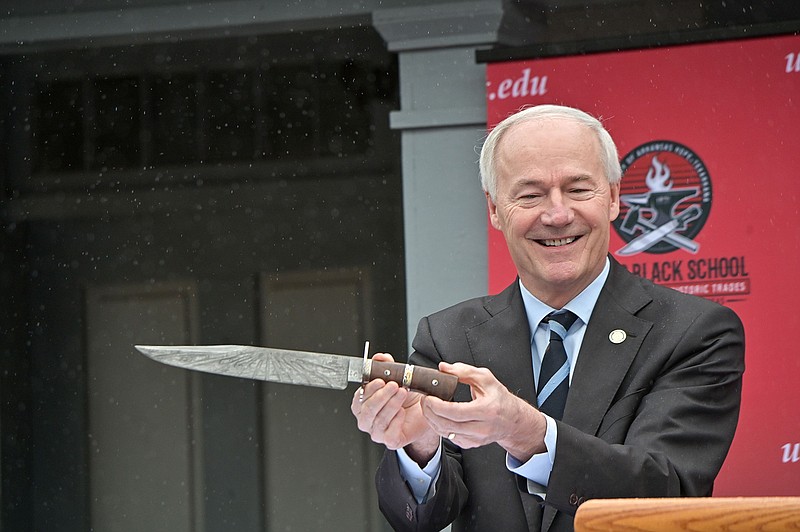WASHINGTON, Ark. - A soggy day outside did not stop a new forge from blazing to life at the dedication of the James Black School of Bladesmithing and Historic Trades on Friday at Historic Washington State Park.
Dozens of well-wishers including state legislators and other officials braved a drizzling rain to attend the event.
Gov. Asa Hutchinson was on hand to help open the school, part of the University of Arkansas Hope-Texarkana. He also unveiled a commemorative Bowie knife dubbed Arkansas No. 1 and welcomed the park as the state's first official Heritage Site, to be known as the Birthplace of the Bowie Knife.
"Arkansas' culture is truly unique. Leadership, grit, determination and hard work have always been at the core of who we are and what we do in Arkansas. Designations like this one remind us of where we came from, of our history and the importance of preserving it for the future," Hutchinson said.
Students at the school will pursue a certificate of proficiency in bladesmithing, the traditional craft of creating knives and other blades as practiced by the school's namesake, James Black, who operated a blacksmith shop on the site of the park in the 19th century and is said to have invented the Bowie knife.
But the school will do more than that, said Chris Thomason, chancellor of UA Hope-Texarkana.
"The James Black School will do more than teach the art of the forged blade. It will connect the art to its history and emphasize how the marriage of art and history is relevant to our present and shared future.
"We will honor our legacy and our history here while cultivating and educating highly skilled artisans who can forge a strong, creative economy and a heritage tourism industry for our families and for our state," Thomason said.
Jerry Fisk, the master bladesmith who designed and created Arkansas No. 1, said learning the old ways will help modern artisans advance the craft.
"You teach the old crafts the old way, and then it will modernize it. All modern art all springs from a traditional art form, and so if they will do that here, teach in a traditional matter, it will just go all over the world, one step at a time, one country at a time," Fisk said.
Arkansas No. 1 was made with 1,836 layers of steel to commemorate 1836, the year Arkansas became a state. Its blade contains steel from a handrail at the Statue of Liberty, and its handle is made from a tree at James Black's gravesite. The knife was displayed alongside another called Bowie No. 1, an 1830 Black knife some say James Bowie carried himself. Arkansas No. 1 will be on permanent display at the school.
The event culminated with a ceremonial lighting of the school's forge using a traditional flint and steel. Flames roared up to applause from the crowd.
For more information about the James Black school, visit uaht.edu/bladesmithing/.

